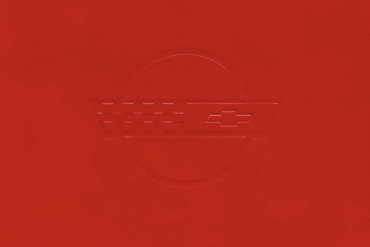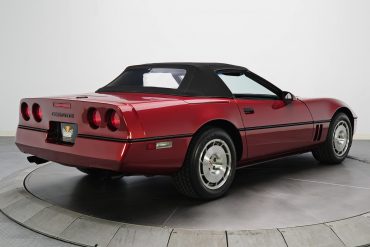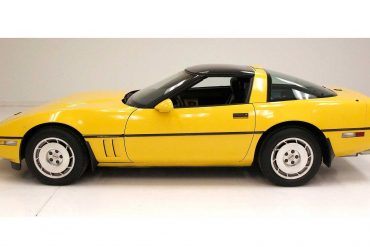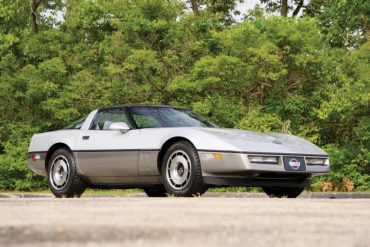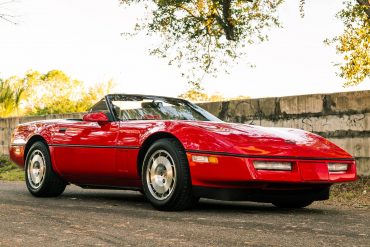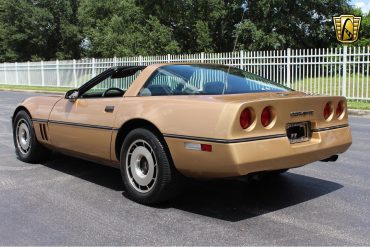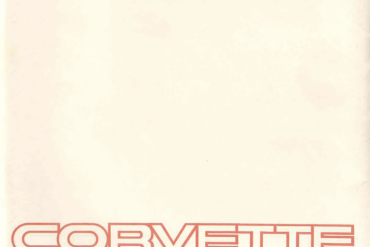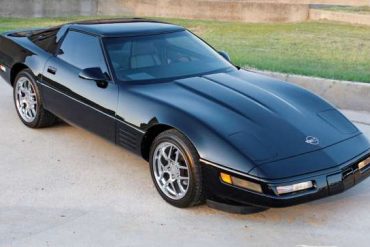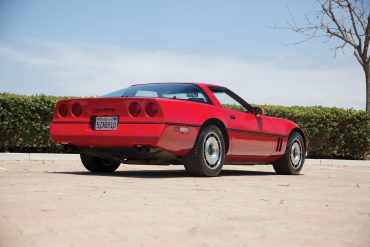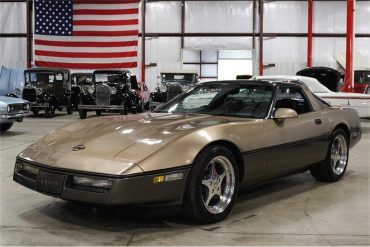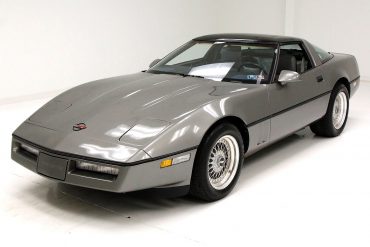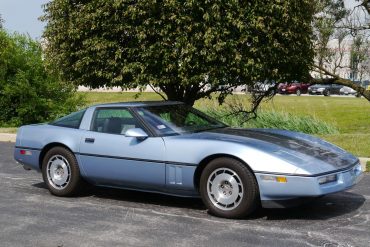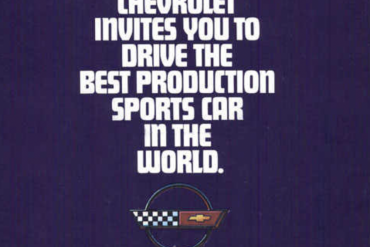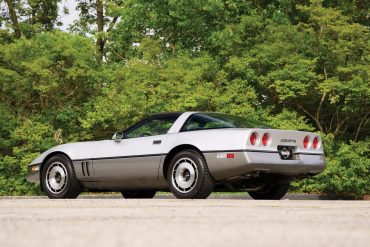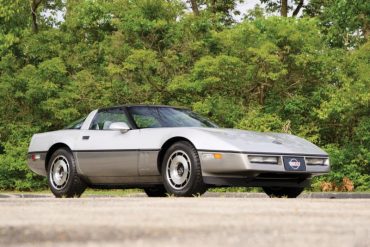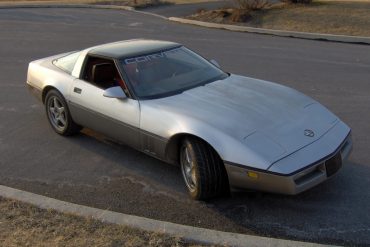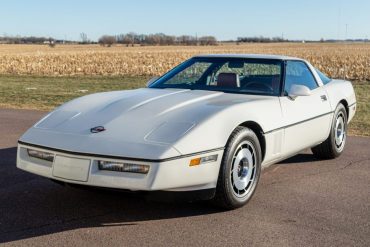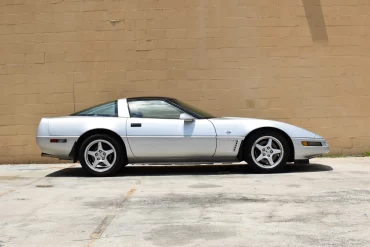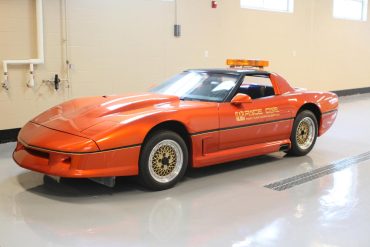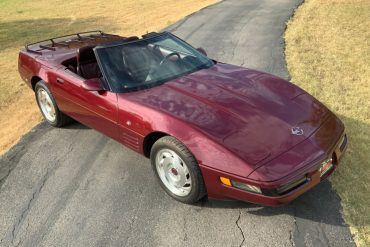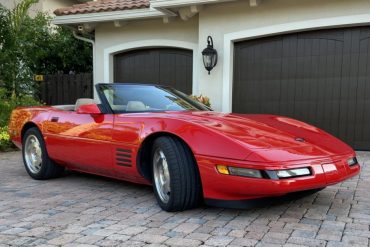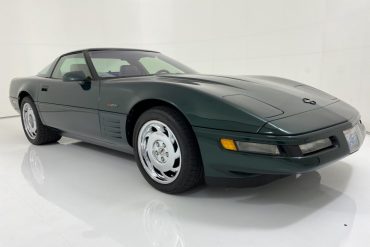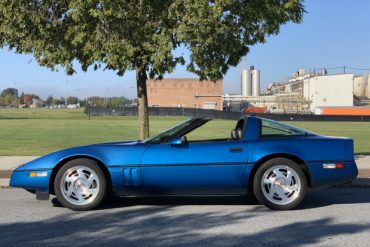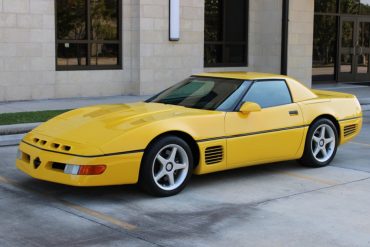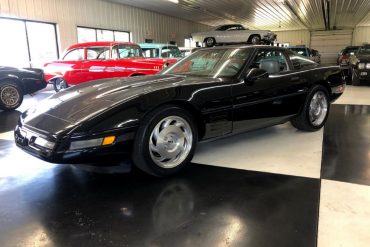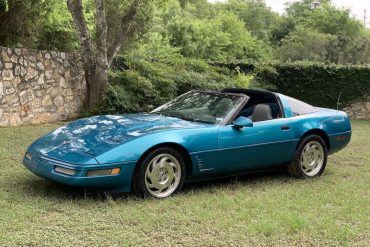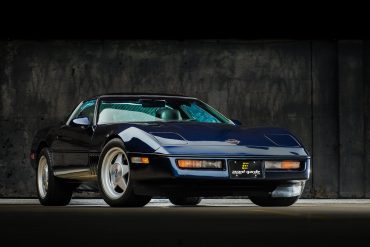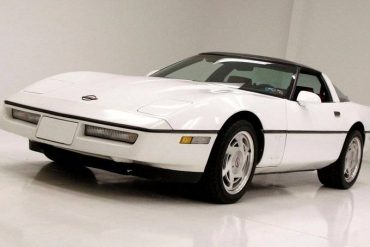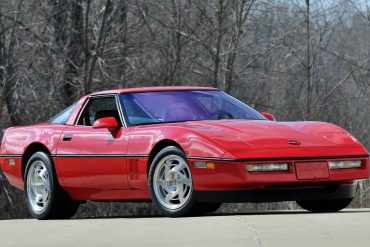Download this 1986 Corvette Dealers Sales Brochure for a quick look at the features of the car. Conversations with owners and engineers of the Corvette's latest generation. What does it take for a car t0 become "world class?" It's not something a car can achieve instantly...
We've scoured the web to curate the factory pricing, options, and interior/exterior color options for the 1986 Chevrolet Corvette.
The following list of common issues is intended for individual reference only, and may not reflect the specific issues of every 1986 Corvette.
Looking for information on how to maintain your 1986 Corvette? We've curated resources to help you keep your Corvette in great shape for years to come!
See the complete technical specifications and performance information for the 1986 Chevrolet Corvette, including engine specs, acceleration, & quarter mile.
For all 1985 Corvettes, the Vehicle Identification Number was stamped on a plate on the inner vertical surface of the left windshield pillar visible through the windshield.
Download this 1985 Corvette Dealers Sales Brochure for a quick look at the features of the car. A 31-year legend in a thoroughly contemporary edition. 1953. The first Corvette. And the first sports car of the modern era. A white body, a red interior, a black soft top and an inline six...
We've scoured the web to curate the factory pricing, options, and interior/exterior color options for the 1985 Chevrolet Corvette.
The following list of common issues is intended for individual reference only, and may not reflect the specific issues of every 1985 Corvette.
Looking for information on how to maintain your 1985 Corvette? We've curated resources to help you keep your Corvette in great shape for years to come!
See the complete technical specifications and performance information for the 1985 Chevrolet Corvette, including engine specs, acceleration, & quarter mile.
For all 1984 Corvettes, the Vehicle Identification Number was stamped on a plate on the inner vertical surface of the left windshield pillar visible through the windshield.
Download this 1984 Corvette Dealers Sales Brochure for a quick look at the features of the car. A quick course in the anatomy of the world's best production sports car. By design, Corvette is a driver's car. A special ongoing, exhilarating experience for the person and the wheel. And...
We've scoured the web to curate the factory pricing, options, and interior/exterior color options for the 1984 Chevrolet Corvette.
The following list of common issues is intended for individual reference only, and may not reflect the specific issues of every 1984 Corvette.
Looking for information on how to maintain your 1984 Corvette? We've curated resources to help you keep your Corvette in great shape for years to come!
See the complete technical specifications and performance information for the 1984 Chevrolet Corvette, including engine specs, acceleration, & quarter mile.
Chevrolet knows their clientele, and with the 1996 Corvette Collector's Edition LT4, the automaker put together a special package that would entice hard-core 'Vette fans with a unique tribute to the outgoing C4 model. The $1250 option brought unique Sebring Silver Metallic paint, 5-spoke wheels, and, of course, special badges and embroidery. It also received the upgraded LT4 powerplant available in the Grand Sport, and with 330 horsepower on tap.
The 1984 PPG Indy Pace Car Corvette was special from the very beginning- in several ways. Initially, it was created as a one-off concept car that would be designated as one of the official Pace Cars for the PPG Indy Car World Series of races. It was custom-built by PPG in cooperation with the Chevrolet Division of General Motors. The 205 HP 350 was replaced by a 450hp, 401 cubic-inch V-8.
Only 4,000 Miles The C4 Corvette is the most affordable model you can buy these days, but these cars are...
Beautiful Ruby Red Metallic and Red Top Want a practically brand new C4 Corvette? Then you’ve found the car that...
No Reserve, Only 24k Miles The C4 Chevrolet Corvette Convertible is a fantastic car for those sunny days. There’s nothing...
No Reserve Not long ago, we shared a 1992 Corvette ZR-1 that was for sale. If you missed that car,...
A Fantastic Car for You The C4 Corvette looks better and better every day now. The car is one of...
Don’t Just get a Corvette, Get a Callaway Corvette If you love the C4 Corvette, but just want something that’s...
A Gorgeous-Looking C4 Corvette We’ve been spending a lot of time looking back through the generations of Corvettes and the...
Get a Beautiful Corvette Coupe The C4 Corvette’s last year was 1996, and the car was a seriously good version...
This is the Callaway Vette You Need Callaway is known for making some of the craziest Corvettes out there. If...
White Over a Red Interior The C4 Corvette was when the body style that more or less came to stay...
We have curated the ultimate collection of the 1990 Corvette Wallpapers and HD backgrounds for you to enjoy. Free to download


